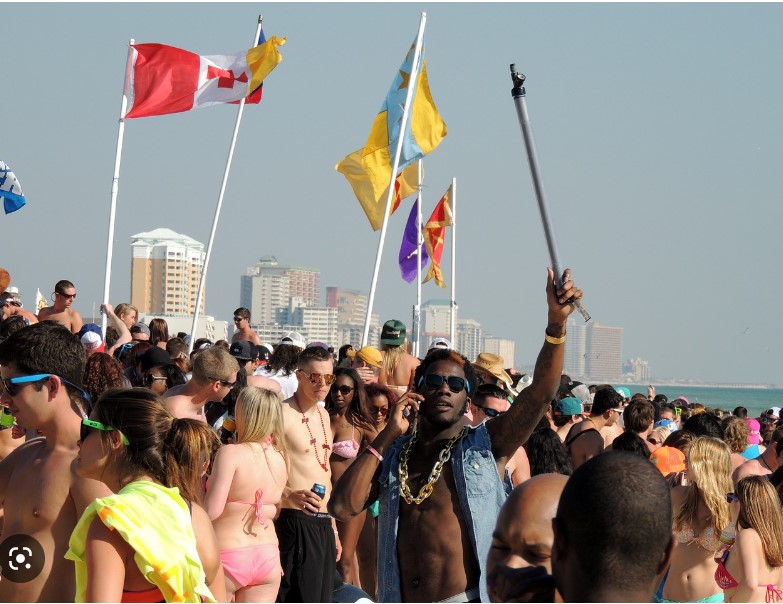Spring break! Friends, beaches, parties, drinking, clubbing, and generally being loud and raunchy. What college kid’s experience would be the same without it?
But the same things that bring such joy to those young people with raging hormones are dreaded by the communities that they descend on like a horde of locusts.
The tradition by now is almost a hundred years old. It started in 1934 when the members of the Colgate University swim team went looking for warmer training waters, and the party really took off with the release of the 1960 film “Where the Boys Are,” shot in Fort Lauderdale.
By 1985, roughly 350,000 students were descending on the city during their March and April breaks, spending an estimated $120 million. Within two years—that’s back in 1987– Fort Lauderdale’s mayor, Bob Cox, already had had enough, saying in an appearance on ABC’s “Good Morning America” that the city could “use far less” spring break visitors.
Today other localities feel even stronger—they don’t want spring breakers at all anymore.
On March 19 Miami Beach’s mayor, Dan Gelber said, “We don’t ask for spring break in our city. We don’t want spring break in our city. It’s too rowdy, brings too much disorder, and is simply too difficult to police.” Gelber’s frustrations have been building for years.
This year Miami dedicated more police officers to managing spring break crowds than it had in years past and still found them to be uncontrollable. It declared a state of emergency and enforced a temporary curfew for the third consecutive year. On March 19, City Commissioner Alex Fernandez told The Wall Street Journal that the police had made over 300 arrests during the spring-break season, adding, “These aren’t spring breakers, they’re lawbreakers.”
Gelber has said, however, that he doesn’t expect an uptick in arrests to solve what he considers a problem for the city.
“We’re not going to arrest our way out of it. We’re going to have to just stop spring break from happening here. That’s the best thing we can do,” he said, though exactly how the city plans to accomplish this remains to be seen.
Despite the mayor’s comments, many young Americans are flocking to Florida. The Sunshine State has long been a popular spring break destination, and Miami Beach, Orlando, and Fort Lauderdale are among the top spots that have attracted travelers.
In dire times when the economy is in crisis, Spring Break may be welcome because of the tax dollars it generates. But despite elevated inflation and speculation about a recession, Florida’s economy is strong and healthy. Now, local administrations weigh the pros and cons of what Spring Break means to the communities and they find that the havoc it creates is not worth the resources it demands.
Miami may have to follow Fort Lauderdale’s model to cut down and possibly discourage altogether, the annual mega-party.
In 1986, when Cox decided Fort Lauderdale’s 30-year run as the spring-break capital of America needed to end, the city began stepping up enforcement of hotel and bar capacity limits and tightened open-container laws. The number of arrests in the city during spring break more than doubled in 1986 from the same period in 1985. The city also got an assist from the state government, which in 1985 raised the state’s drinking age to 21 from 19.
Over the next two decades, the number of students flocking to Fort Lauderdale fell from hundreds of thousands to tens of thousands.
While college students still frequent Fort Lauderdale during spring break, the city’s current mayor, Dean Trantalis, described them as “very well behaved.” The kids who still head to Fort Lauderdale know it’s no longer party central, it’s more of a “chill place,” Trantalis says, and they plan to keep it that way.












